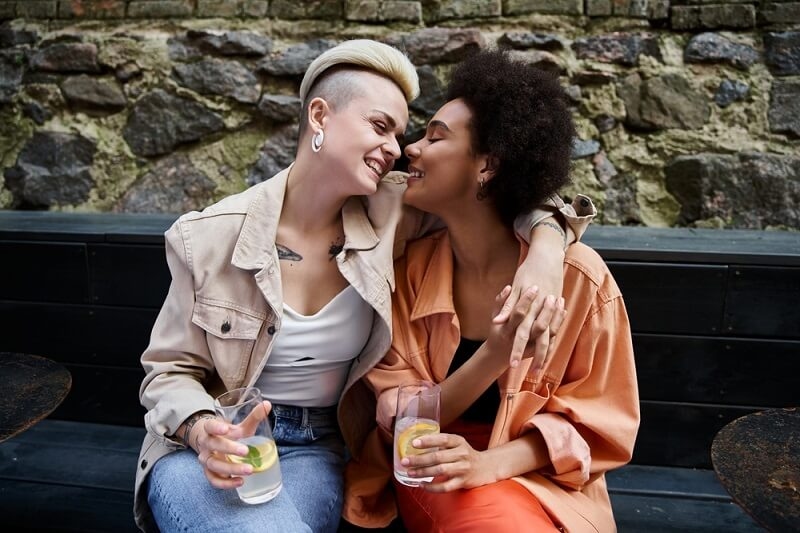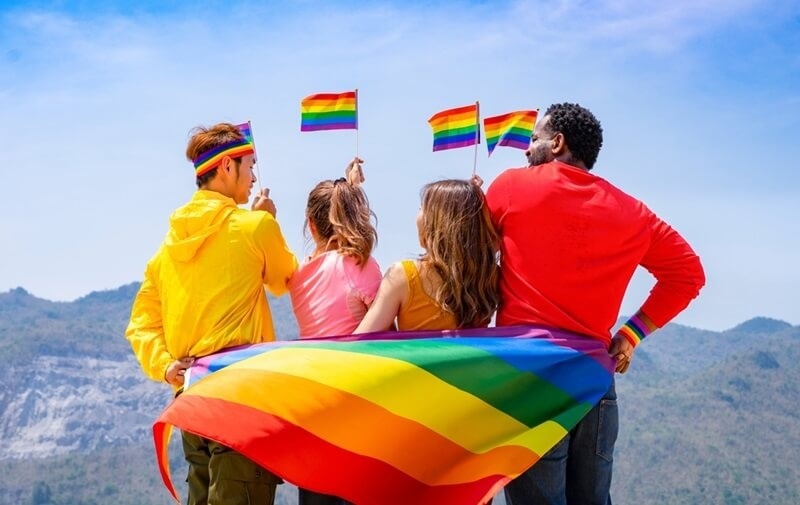Understanding Gynosexuality: Insights and Perspectives

Gynosexuality is an essential concept in contemporary discussions on gender and sexuality. It represents an attraction to femininity or feminine qualities, irrespective of the gender identity of the person exhibiting those qualities. In a society that increasingly acknowledges and respects diverse sexual orientations, understanding terms like gynesexual is crucial. Recognizing and respecting various sexual identities fosters inclusivity, combats prejudice, and supports individuals in their journey towards self-discovery and acceptance.
Grasping the Concept of Gynosexuality
The gynesexual meaning revolves around an attraction to femininity or feminine traits. This attraction is not limited by the gender identity of the person displaying these traits. Therefore, a gynesexual person may be attracted to individuals who identify as female, non-binary, transgender, or even cisgender males who present feminine characteristics. This makes gynosexuality distinct from more traditional sexual orientations like heterosexuality, which is typically defined by attraction based on binary gender identities.
Gynosexuality is unique in that it focuses on the aesthetic and behavioral qualities associated with femininity rather than the specific gender of the individual. This allows for a broader and more inclusive understanding of sexual attraction that transcends conventional gender boundaries.
Alternative Terms and Their Nuances
Several terms are used interchangeably with gynosexuality, though they carry subtle differences. Gynophilia, for instance, also refers to an attraction to femininity but is often more closely associated with romantic love rather than purely sexual attraction. The term gynesexual is broader, encompassing both sexual and non-sexual admiration for feminine traits.
Another related term is gyneromantic, which specifically denotes a romantic attraction to femininity without the sexual connotation that comes with gynesexuality. These distinctions are important as they help individuals more precisely define and communicate their experiences and preferences. Understanding these terms enhances our grasp of the rich tapestry of human sexuality and helps create a more inclusive environment for all.
Comparing Gynosexuality and Androsexuality
To fully appreciate the concept of gynosexuality, it is helpful to compare it with androsexuality. While gynesexual individuals are attracted to feminine qualities, androsexual individuals are attracted to masculine traits. Androsexuality focuses on the characteristics traditionally associated with masculinity, irrespective of the gender identity of the person who exhibits these traits.
These terms are particularly useful for non-binary individuals who may find traditional labels like heterosexual, homosexual, or bisexual limiting or inaccurate. By identifying as gynesexual or androsexual, individuals can more accurately describe their attractions without being confined to binary gender frameworks. This nuanced understanding allows for greater personal expression and fosters acceptance within the broader community. Understanding these terms also underscores the importance of opposing harmful practices like gay conversion therapy.
How to Explore Gynosexuality

Exploring one's sexual orientation can be a profound and personal journey, especially when understanding a term like gynesexual. The process often involves deep self-reflection and honest conversations with oneself and trusted individuals.
Self-Reflection Questions for Understanding Attraction
To begin exploring your gynosexuality, consider asking yourself some reflective questions. These might include:
- What qualities do I find sexually and romantically appealing in others?
- Am I attracted to specific physical attributes associated with femininity, such as curves, long hair, or certain fashion styles?
- What non-physical feminine qualities, like voice pitch, mannerisms, or behaviors, do I find attractive?
By pondering these questions, you can gain insight into whether your attractions align with the gynesexual meaning, which encompasses an attraction to feminine traits regardless of the gender identity of the person possessing them.
Journaling and Discussions for Clarity
Journaling can be an effective tool for processing your thoughts and feelings about your sexual orientation. Writing regularly about your attractions, experiences, and reflections can help you track patterns and gain deeper self-awareness.
In addition to journaling, discussing your feelings with trusted friends, family members, or a therapist can provide valuable perspectives and support. A therapist, especially one experienced in LGBTQ+ issues, can offer professional guidance as you navigate your understanding of being gynesexual.
Exploring Feelings in a Supportive Environment
It's crucial to explore your feelings in a safe and supportive environment. Surround yourself with people who respect and affirm your journey. If you encounter negativity or misunderstanding, seek out supportive communities or online groups where you can connect with others who share similar experiences.
The Importance of Clear Communication
Explaining Gynosexuality to Loved Ones
When you're ready to share your gynosexuality with friends and family, clear communication is key. Begin by explaining the gynesexual meaning: an attraction to femininity or feminine qualities, regardless of the person's gender identity. Use simple, relatable examples to help them understand. For more insights into understanding sexual orientations, you might find the science of gaydar informative.
Maintaining Patience and Setting Boundaries
Patience is essential when discussing your sexual orientation with others. Understand that it might take time for loved ones to fully grasp what being gynesexual means. Set clear boundaries to protect your emotional well-being during these conversations. If someone repeatedly dismisses or misunderstands your orientation, it's okay to limit discussions and seek support elsewhere.
Benefits of Understanding Diverse Sexual Orientations
Broader Social Acceptance and Support
Understanding diverse sexual orientations like gynosexuality contributes to broader social acceptance and support for individuals. When people learn about different orientations, they become more empathetic and inclusive, creating a more supportive environment for everyone.
Education's Role in Reducing Stigma
Education plays a vital role in reducing stigma and promoting inclusivity. By educating yourself and others about gynosexuality, you help dismantle misconceptions and foster a culture of acceptance. Displaying symbols like the gynesexual flag can also raise awareness and show solidarity with the community.
You may also like: Exploring Gender Identity: Navigating the Journey Properly
Final Thoughts
Exploring gynosexuality involves self-reflection, open communication, and a supportive environment. By asking reflective questions, journaling, and discussing your feelings with trusted individuals, you can gain clarity about your attractions. Clear communication and patience are essential when explaining your orientation to others.
Understanding diverse sexual orientations leads to greater social acceptance and reduces stigma. Continued learning and open-mindedness are crucial in creating an inclusive society where everyone feels respected and valued. Embracing your identity as gynesexual is a vital step towards living authentically and fostering a supportive community.























